Have you ever noticed your furry friend scratching excessively, licking their paws incessantly, or developing skin rashes seemingly out of nowhere?
If so, your dog might be suffering from a contact allergy. Just like humans, dogs can also experience allergic reactions triggered by substances they come into contact with. From plants and fabrics to grooming products and household chemicals, the list of potential allergens is vast and varied.
In this comprehensive guide, we’ll delve into the world of contact allergies in dogs, exploring everything from common triggers and symptoms to diagnosis, treatment, and prevention strategies.
By understanding the intricacies of contact allergies, you’ll be better equipped to provide your canine companion with the care and relief they need.
Contents Overview
Understanding Contact Allergies in Dogs
Contact allergies, also known as contact dermatitis, are allergic reactions that occur when a dog’s skin comes into direct contact with certain substances or materials. These substances, known as allergens, can trigger an immune response in sensitive dogs, leading to symptoms such as itching, redness, and inflammation. Contact allergies can be a source of discomfort and frustration for both dogs and their owners, but with a thorough understanding of the condition, its triggers, symptoms, and treatment options, you can help your furry friend find relief and live comfortably.
Common Triggers of Contact Allergies
Contact allergies in dogs can be triggered by a diverse range of substances found in their environment. Understanding these common triggers is essential for identifying and managing your dog’s allergies effectively. Let’s explore some of the most prevalent culprits:
- Plants:
- Poison Ivy, Oak, and Sumac: These plants contain urushiol, an oil that can cause allergic reactions upon contact with a dog’s skin. Symptoms may include redness, itching, and rash.
- Grasses and Pollens: Certain grasses and pollens can also trigger allergic reactions in dogs, leading to symptoms such as itching, sneezing, and watery eyes.
- Fabrics:
- Synthetic Materials: Fabrics made from synthetic materials, such as polyester and nylon, can irritate a dog’s skin, particularly if they spend a lot of time lying on or wearing these materials.
- Wool: Some dogs may be sensitive to wool fibers, leading to itching, redness, and discomfort.
- Dyes and Chemicals: Certain dyes or chemicals used in fabrics can also cause allergic reactions in dogs with sensitive skin.
- Grooming Products:
- Shampoos and Conditioners: Grooming products containing harsh chemicals or fragrances may irritate a dog’s skin, leading to itching, redness, and inflammation.
- Flea and Tick Treatments: Some topical flea and tick treatments can cause allergic reactions in dogs, especially if they contain potent ingredients or if the dog is sensitive to certain chemicals.
- Household Chemicals:
- Cleaning Agents: Household cleaning agents, such as bleach, ammonia, and detergents, can irritate a dog’s skin if they come into direct contact with it.
- Pesticides and Herbicides: Chemicals used in pesticides and herbicides can also trigger allergic reactions in dogs if they are exposed to them outdoors or indoors.
- Metals:
- Nickel: Dogs may develop allergic reactions to metals such as nickel, which is commonly found in jewelry, collars, and other accessories. Symptoms may include redness, itching, and inflammation around the contact area.
Symptoms of Contact Allergies
Contact allergies, also known as contact dermatitis, can manifest in a variety of symptoms in dogs. Recognizing these signs is crucial for identifying the presence of an allergic reaction and seeking appropriate veterinary care. Let’s explore the common symptoms of contact allergies in dogs:
- Itching and Scratching:
- Excessive itching, scratching, or biting at the affected area is one of the hallmark signs of contact allergies in dogs. The urge to scratch may be intense and persistent, leading to discomfort and skin irritation.
- Redness and Inflammation:
- The skin may appear red, inflamed, or irritated in areas where the allergen came into contact with the dog’s skin. This redness may be localized to specific areas or spread across larger portions of the body.
- Rash or Hives:
- Raised bumps, rash-like patches, or hives may develop on the skin as a result of the allergic reaction. These lesions may be accompanied by itching, swelling, and discomfort.
- Hair Loss:
- Chronic scratching or chewing at the affected area can lead to hair loss or thinning of the coat. Bald patches may develop over time as a result of repeated irritation and inflammation.
- Excessive Licking:
- Dogs may exhibit excessive licking of the affected area in an attempt to soothe itching and discomfort. Constant licking can exacerbate irritation and lead to further skin damage.
- Blisters or Sores:
- In severe cases, contact allergies may cause the formation of blisters, pustules, or open sores on the skin. These lesions may be painful and may increase the risk of secondary bacterial or yeast infections.
- Secondary Infections:
- Prolonged scratching or chewing can break the skin, creating openings for bacteria or yeast to enter and cause secondary infections. Signs of infection may include redness, swelling, discharge, and foul odor.
- Behavioral Changes:
- Dogs experiencing discomfort due to contact allergies may exhibit changes in behavior, such as restlessness, irritability, or decreased appetite. They may also seek out secluded areas to alleviate itching and discomfort.
Seeking Veterinary Care
If you notice any of these symptoms in your dog, it’s essential to seek veterinary care promptly. Your veterinarian can perform a thorough physical examination, review your dog’s medical history, and recommend appropriate diagnostic tests to determine the underlying cause of their symptoms.
Diagnosis and Treatment
Diagnosing and treating contact allergies in dogs requires a thorough understanding of the condition, its triggers, and its management strategies. Let’s delve into the process of diagnosing and treating contact allergies in dogs:
Diagnosis:
- Physical Examination: Your veterinarian will begin by conducting a thorough physical examination of your dog, paying close attention to any areas of skin irritation, redness, or inflammation.
- Medical History Review: Providing your veterinarian with a detailed medical history, including any recent changes in your dog’s environment, diet, or grooming routine, can help identify potential triggers for their allergies.
- Allergy Testing: If contact allergies are suspected, your veterinarian may recommend allergy testing to identify the specific allergen causing your dog’s symptoms. Common allergy testing methods include skin scrapings, patch testing, and blood tests.
- Elimination Diet Trial: In some cases, your veterinarian may recommend an elimination diet trial to rule out food allergies as a potential cause of your dog’s symptoms. This involves feeding your dog a hypoallergenic diet containing novel protein and carbohydrate sources for a period of several weeks to see if their symptoms improve.
Treatment:
- Avoidance: Once the allergen causing your dog’s contact allergy has been identified, the first step in treatment is to minimize your dog’s exposure to that allergen. This may involve removing certain plants from your yard, switching to hypoallergenic grooming products, or avoiding contact with specific fabrics or household chemicals.
- Topical Treatments: Medicated shampoos, creams, or sprays containing ingredients such as hydrocortisone, oatmeal, or aloe vera can help soothe irritated skin and reduce inflammation. These products are typically applied directly to the affected area as directed by your veterinarian.
- Medications: In cases of severe itching or inflammation, your veterinarian may prescribe medications such as antihistamines, corticosteroids, or non-steroidal anti-inflammatory drugs (NSAIDs) to alleviate your dog’s symptoms. These medications may be administered orally or applied topically, depending on the severity of your dog’s condition.
- Immunotherapy: For dogs with chronic or severe allergies, allergen-specific immunotherapy (commonly known as allergy shots) may be recommended. This involves administering small doses of the allergen to your dog over time, gradually desensitizing their immune system and reducing their allergic response.
- Nutritional Supplements: Omega-3 fatty acids and other nutritional supplements may be beneficial in supporting your dog’s skin health and reducing inflammation associated with contact allergies. These supplements can be added to your dog’s diet as directed by your veterinarian.
Preventing Contact Allergies in Dogs
While it may not always be possible to completely eliminate your dog’s exposure to allergens, there are several proactive steps you can take to minimize their risk of developing contact allergies. By being vigilant about potential triggers and implementing preventive measures, you can help keep your furry friend comfortable and healthy. Let’s explore some effective strategies for preventing contact allergies in dogs:
- Identify and Avoid Known Allergens:
- Plants: Be aware of plants in your yard or surrounding environment that may contain irritants, such as poison ivy, oak, and sumac. Remove these plants or create barriers to prevent your dog from coming into contact with them.
- Fabrics: Choose pet bedding, blankets, and clothing made from hypoallergenic materials to reduce the risk of skin irritation. Avoid using harsh dyes or chemicals in fabrics that may trigger allergic reactions.
- Grooming Products: Use gentle, hypoallergenic grooming products that are specifically formulated for dogs with sensitive skin. Avoid products containing harsh chemicals, fragrances, or artificial additives.
- Household Chemicals: Store household cleaning agents, detergents, and pesticides out of your dog’s reach, and use pet-safe alternatives whenever possible. Rinse surfaces thoroughly after cleaning to remove any residue that may cause irritation.
- Metals: Choose collars, leashes, and accessories made from hypoallergenic materials, such as stainless steel or nylon, to minimize the risk of metal allergies. Avoid using metal jewelry or accessories that may come into direct contact with your dog’s skin.
- Regular Grooming and Skin Care:
- Bathing: Bathe your dog regularly using a mild, hypoallergenic shampoo to remove allergens from their skin and coat. Pay special attention to areas prone to irritation, such as the paws, belly, and ears.
- Brushing: Brush your dog’s coat regularly to remove loose hair, dirt, and debris that may harbor allergens. Use a soft-bristled brush to avoid irritating your dog’s skin.
- Moisturizing: Apply a pet-safe moisturizer or conditioner to your dog’s skin to help maintain hydration and prevent dryness, especially after bathing or exposure to harsh weather conditions.
- Environmental Management:
- Indoor Environment: Keep your home clean and free of dust, mold, and other indoor allergens that may contribute to skin irritation. Use high-quality air filters and regularly vacuum and dust to reduce allergen exposure.
- Outdoor Environment: Supervise your dog while outdoors to prevent them from coming into contact with potentially allergenic plants, chemicals, or other substances. Consider using protective clothing or boots when walking your dog in areas where they may encounter allergens.
- Balanced Nutrition:
- Provide your dog with a balanced, nutritious diet that supports their overall health and immune function. Choose high-quality dog food formulated with wholesome ingredients and essential nutrients to help strengthen their skin barrier and reduce the risk of allergic reactions.
- Consider incorporating supplements such as omega-3 fatty acids, which have anti-inflammatory properties and may help improve skin health in allergic dogs. Consult with your veterinarian to determine the appropriate dosage and supplementation regimen for your dog.
- Regular Veterinary Check-ups:
- Schedule regular veterinary check-ups for your dog to monitor their skin health and address any potential issues or concerns promptly. Your veterinarian can provide personalized recommendations for preventing contact allergies based on your dog’s breed, age, and lifestyle.
Bottom Line
Contact allergies can significantly impact your dog’s quality of life, but with the right knowledge and proactive management strategies, you can help alleviate their symptoms and prevent future flare-ups. By being vigilant about potential allergens, seeking prompt veterinary care, and implementing appropriate treatment measures, you can ensure that your canine companion remains happy, healthy, and itch-free.
Remember, every dog is unique, so what works for one may not work for another. Consult with your veterinarian to develop a tailored treatment plan that addresses your dog’s specific needs and ensures their comfort and well-being for years to come. With patience, perseverance, and plenty of love, you can help your allergic dog live their best life.

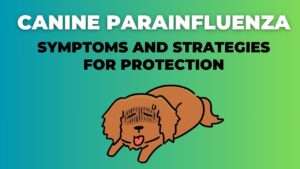


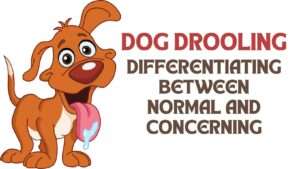

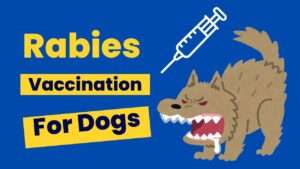


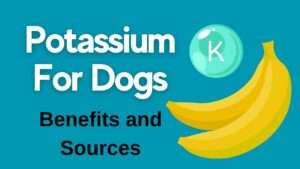







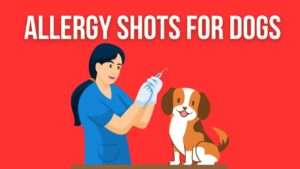

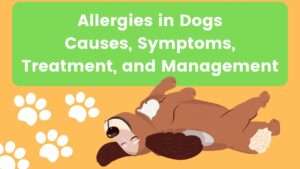
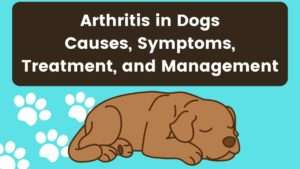
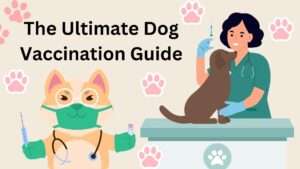
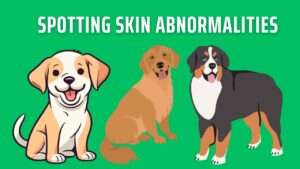



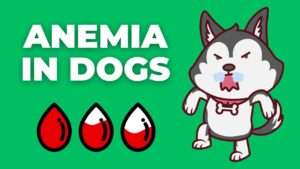








+ There are no comments
Add yours